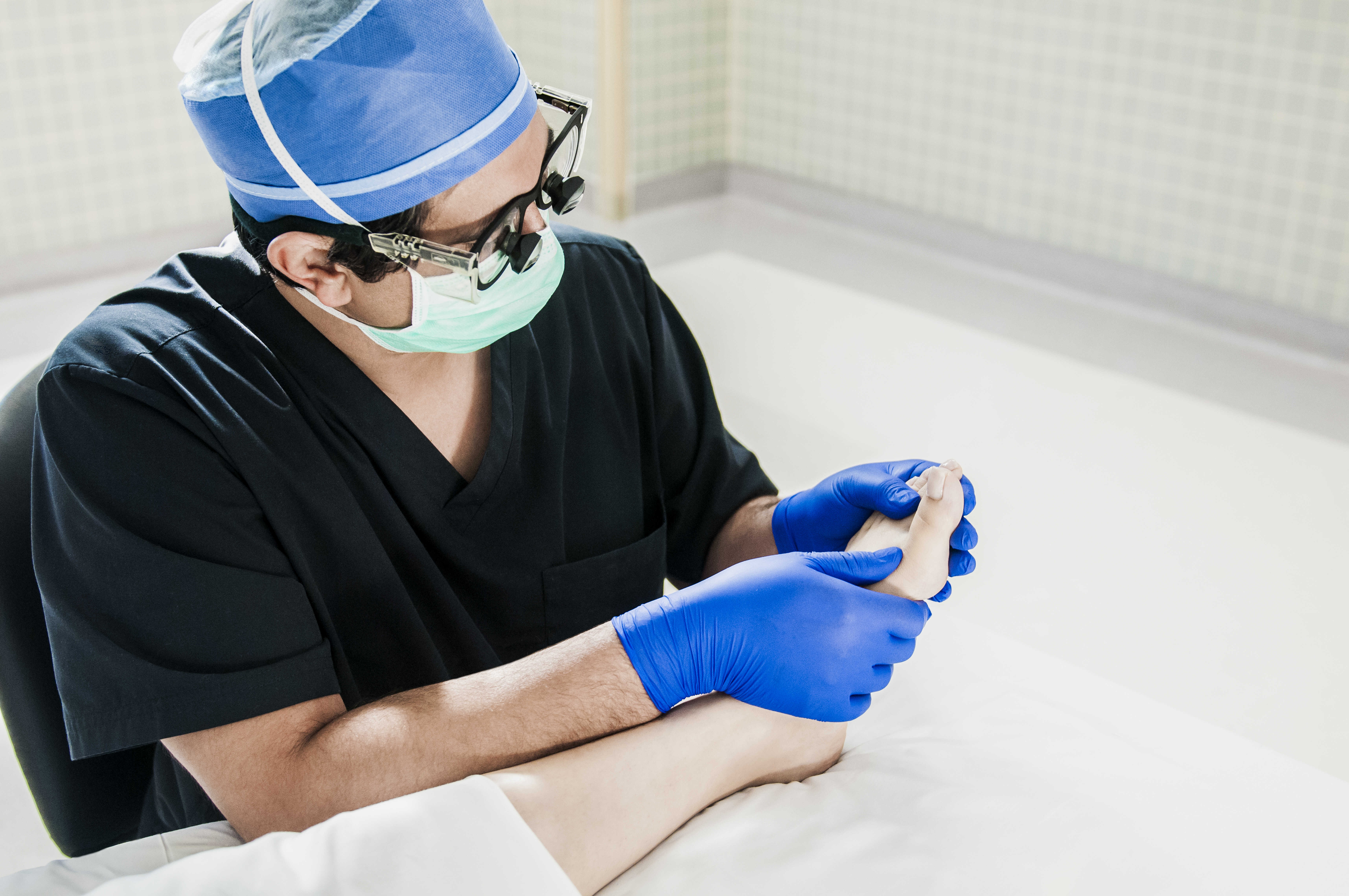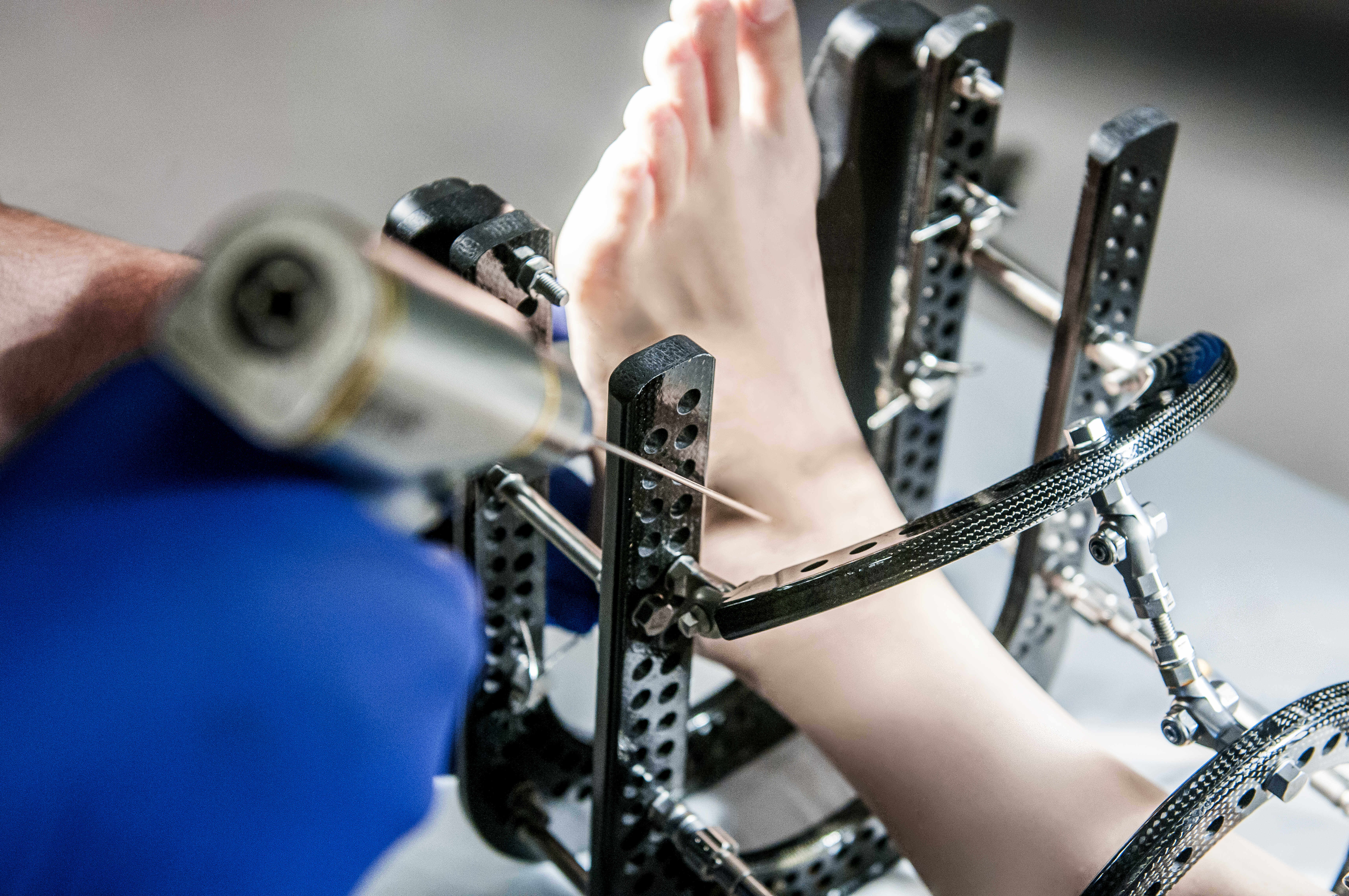For some people with a hammertoe, surgery is an appropriate `option when non-surgical options have failed to provide adequate relief of pain. In many of these patients, the deformity has progressed to the point where it has become more rigid and painful and may have even led to open sores. Surgery reduces the contracture (bending) and puts the toe in a straighter position, thereby relieving pain and pressure and enabling the patient to resume normal activities. Different types of procedures are available to treat hammertoes. In selecting the procedure, your surgeon has taken into consideration the extent of your deformity based on x-ray findings, your age, your activity level, and other factors. Two common procedures, which may be modified by your surgeon to address your needs, are described below.
Joint Resection (Arthroplasty):
Arthroplasty is a joint resection procedure in which a portion of the joint in the toe is surgically removed. The goal of the procedure is to decrease the deformity of the toe and decrease pain.
After making an incision on the top of the toe, the surgeon:
- Releases the soft tissue to gain access to the joint with the contracture
- Removes a portion of the bone of the joint
- A wire may be inserted through the toe to keep it straight while healing. This wire is typically removed in 2-6 weeks.
- May also perform soft tissue procedures at adjacent joints in order to realign the toe
- Closes the incision with stitches and applies a sterile bandage
Arthrodesis:
Arthrodesis, also known as fusion, may be performed to correct hammertoes that are no longer flexible.
After making an incision on the top of the toe, the surgeon:
- Releases the soft tissue to gain access to the bones
- Removes a portion of the bones of the joint as well as the cartilage from the joint where those two bones meet
- Realigns the toe into a straightened position
- Inserts fixation through the toe to keep it straight while healing (the fixation may be removed later)
- In some cases, the surgeon may also perform soft tissue procedures at adjacent joints in order to realign the toe
- Closes the incision with stitches and applies a sterile bandage
Possible Additional Procedures:
- Tenotomy/Extensor Tendon Lengthening
- Metatarsophalangeal Joint Release
- Lengthening or cutting of tendons and ligaments that contribute to the deformity.
- Flexor Tendon Transfer : A procedure in which the tendon is relocated (repositioned) in order to stabilize (balance) the toe.
- Metatarsal Osteotomy :The position of a bone within the ball of your foot (metatarsal bone) may contribute to the deformity. This bone may need to be cut and repositioned in order to align the joint and the toe.
Recovery:
Recovery from these procedures generally take 6-12 weeks. During a portion of this period, weight bearing on the operative foot may not be permitted.



